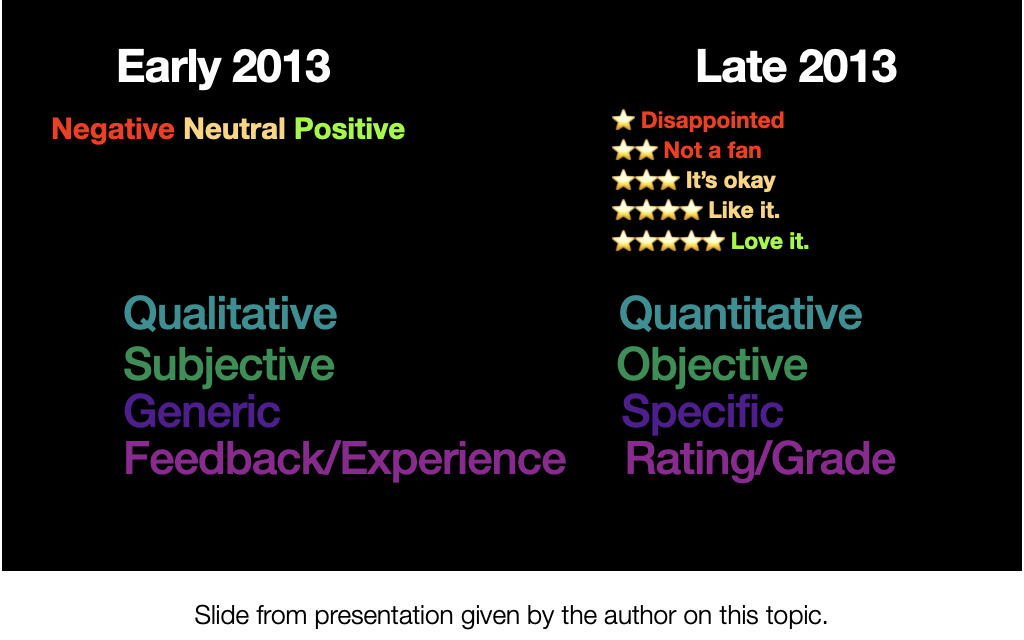The Shift to “Objective” Stars
So, where did all of this start? In early 2013, the reviews that customers could leave featured three options: “negative,” “neutral,” or “positive.” In late 2013, these values were switched to a starred approach, with negative reviews being translated to one or two stars, one star meaning “disappointed” and two stars meaning “Not a fan.” Neutral translated to three and four star ratings meaning “It’s okay.” and “Like it,” respectively. Lastly, positive reviews were translated to five stars, meaning “love it.” These words pop up when a user hovers over the number of stars to select which one best describes their shopping experience. The resulting “experiences” for the customer shifted from a qualitative, subjective, generic feedback of experience approach for leaving product reviews to a quantitative, objective, specific and rating/grade approach. The shift from seller or overall shop review to the review of an individual item, which varies, and by the nature of the marketplace, should be handmade and individually created for each customer. This method is not only dehumanizing for the seller, but gives the buyer a significant amount of leverage in the future of a shop or item in a given marketplace because of the way it impacts the algorithms that determine which items are featured in searches.

All of this in itself could be considered fine; it is a way to create a seemingly equitable marketplace for sellers with a transparent review system allowing freedom of expression of contentment or discontentment with a particular item or service. This could absolutely be said about a marketplace wherein each seller and buyer represent the same demographics, but not one where the sellers and buyers represent populations with historically very different societal power and autonomy.

